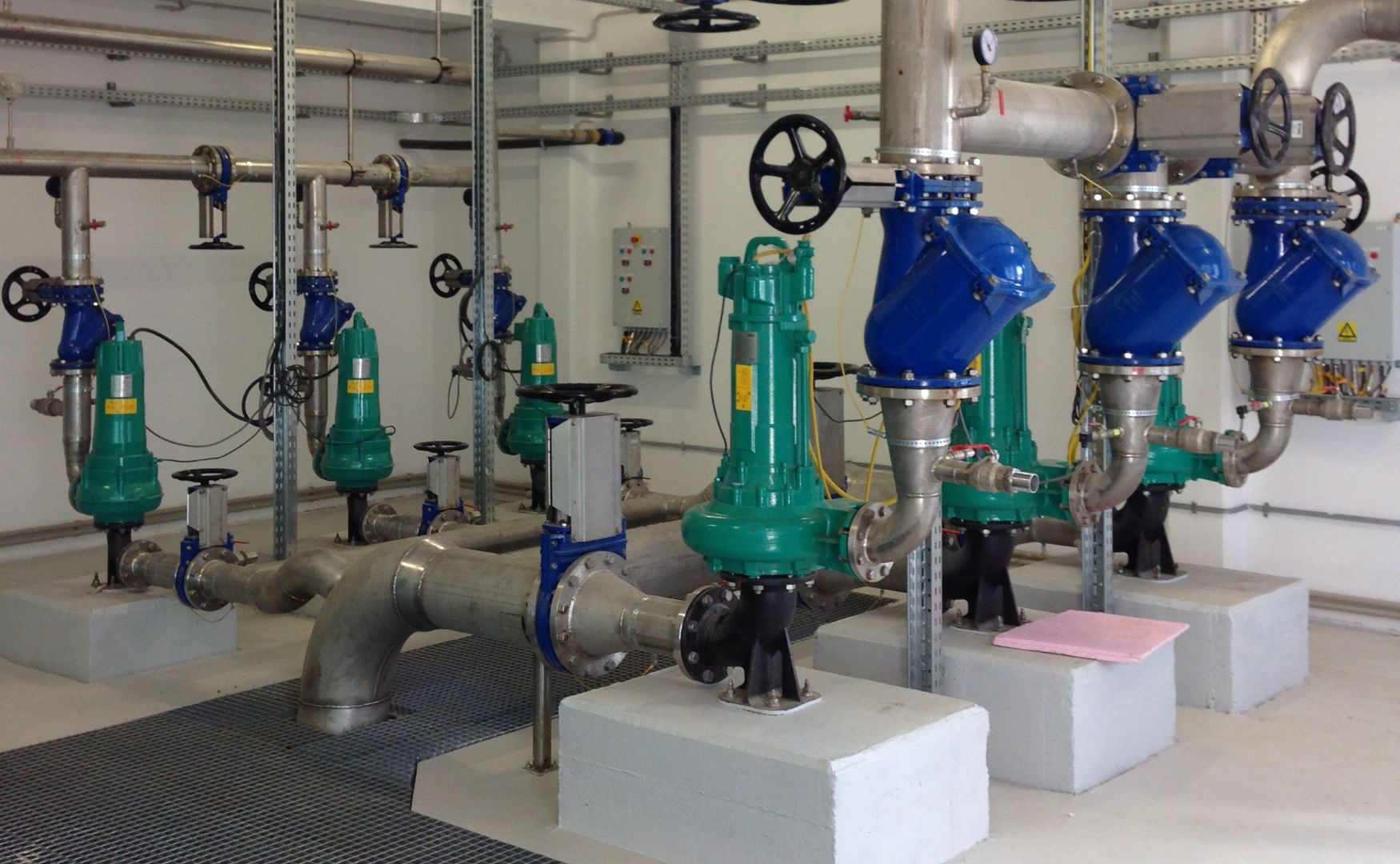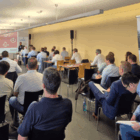A lift is a technical system that transports liquid media such as wastewater or sewage from lower-lying areas to higher-lying pipe networks. It is an essential component in water management and wastewater technology and is used wherever natural gradients for wastewater disposal are lacking or insufficient. The lift ensures the transportation of wastewater to the sewage treatment plant or downstream treatment plants.
Structure and main components
A hoist is made up of several key components:
Collecting container or shaft
- Collecting tank for the waste water, which can be designed as a dry or wet installation depending on the application.
Pump system
- Central component that handles the pumping. Depending on the pumped medium, waste water pumps or sewage pumps are used.
Backflow protection and non-return valves
- Prevent wastewater from flowing back into the lifting unit.
Control and regulation technology
- Monitors the fill level and controls the pump automatically. Monitoring and remote maintenance are possible with modern hoists.
Functionality
The wastewater flows by gravity into the collection tank of the lifting station. As soon as a defined fill level is reached, the control system activates the pump. This pumps the wastewater via the pressure pipe into the higher sewer system. Non-return valves ensure that no water flows back.
Areas of application
Municipal wastewater disposal
- In residential areas with low topography or below the backflow level.
Industrial wastewater treatment
- In production plants, e.g. in the food industry, chemical industry or electroplating, for pumping large quantities of waste water with complex ingredients.
Rainwater drainage
- In the event of flooding or heavy rainfall in urban areas to prevent flooding.
Power plants and process water
- For recirculating cooling water or process water.

Photo: Lifting unit of one of our water treatment plants
Technical specifications
Delivery rate and delivery head
These two parameters determine the selection of pumps. Industrial hoists can pump several hundred cubic meters per hour over great heights.Materials and corrosion protection
Depending on the wastewater composition, the components must be resistant to chemical and mechanical influences. High-quality materials such as stainless steel or special plastics are often used.Redundancy and safety
In critical applications, a double pump design is often used to ensure operational safety and availability.
Hoists from ALMAWATECH
ALMAWATECH develops and supplies lifting stations that are specially optimized for the requirements ofindustrial wastewater treatment and water treatment. Our systems have a modular design so that they can be individually adapted to the conditions and requirements of our customers. We also offer online support and remote maintenance for monitoring and fault diagnosis. Further information can be found on our operations management page.
Conclusion
Lifting stations are essential equipment for efficient and reliable wastewater treatment. With modern technology such as that offered by ALMAWATECH, operating costs can be reduced, efficiency increased and compliance with legal requirements ensured.
For further information on our products, please feel free to contact us at any time!







